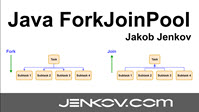WSDL 2.0 - Web Service Description Language
Jakob Jenkov |
WSDL is short for Web Service Description Language. WSDL is used to describe the interface of a web service. If you do not know the interface of a web service, how could you call it?
This WSDL tutorial is an introduction to WSDL 2.0. It will not cover each and every little detail of WSDL 2.0, but focus on the primary details. Parts of this tutorial will be reworked over time, so if you have any corrections etc., let me know. See the bottom of the page for how to contact me.
WSDL is Written in XML
Like SOAP, WSDL is written in XML. This makes WSDL documents platform independent. Most programming languages and platforms have XML parsing tools these days, so no matter what language or platform you are using, you should be able to parse WSDL files.
WSDL is Machine Readable
WSDL is machine readable, meaning a program could read a WSDL file and from that deduce how to call a given web service. You can also generate code for clients from a WSDL file. You can even generate stubs for your own web services from a WSDL file.
WSDL Tutorial - Table of Contents
In this WSDL tutorial I will describe how to write your own WSDL files. First I will give you an overview of WSDL in the first text. Then I will describe each element, each in it's own text.
WSDL 2.0
This WSDL tutorial focuses on WSDL 2.0 . The major new thing in WSDL 2.0
is the interface element, which describes a web service interface in a more intuitive way
than the previous portType, operation and message elements did.
The interface element groups operation and message elements
naturally together, instead of listing them separately, as was the practice in earlier versions of WSDL.
Feel Free to Contact Me
If you disagree with anything I write here about WSDL, or just have comments, questions, etc, feel free to send me an email. You wouldn't be the first to do so. You can find my email address on the about page.
| Tweet | |
Jakob Jenkov | |











